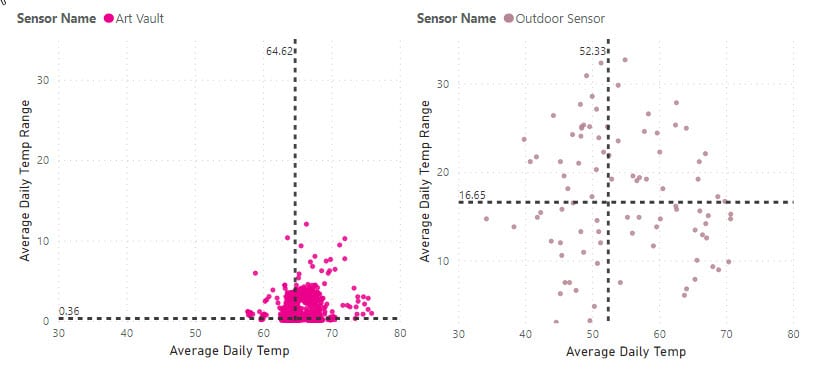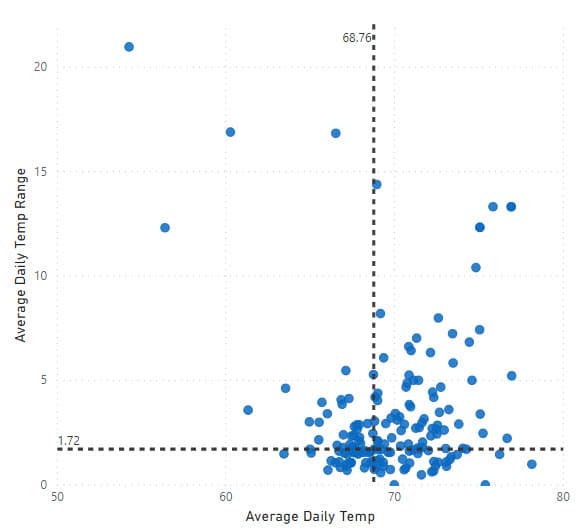If you’re not 100% sure what environment is appropriate for your collection, you’re not alone. Making sense of the various recommendations is a difficult task. You can go look at the standards, 46-60% RH, 68-72 Temp, but is that really most appropriate for your unique circumstances. Perhaps another way to look at the problem is to start with real data and work backwards.
We start with real data.
Here’s the data we’ve collected data from 217 sensors and data loggers over the last 9 months, nearly 5 million sensor readings.
In this graph each dot represents a single sensor plotted against average daily temperature (x-axis) and the average daily temp range, or what was an average amount of movement during the day (y-axis). We take all the days for that sensor and average out the readings.
So set the standards aside for a minute, a typical collection has a mean temperature of 68.72° degrees with an average daily movement of 1.72°. It’s what you’d expect from well-controlled collection environments – with some variation of course.
Your collection has baseline(s)
We can take the same graph and drill down into a single space, where each dot represents a day of readings – it’s fair to say that these spaces perform very differently.
When deciding on a level for your collection it’s great to start with an understanding of how your spaces currently perform. These are your baseline levels.

We could have a quite a collection of data if we looked at every storage, cold storage, gallery, archive, and library space. If we looked at environments for rooms with textiles, pottery, or paintings. If we looked at seasons of the year across different geographies.
There’s a lot of data on collection environments that we can easily access to better inform how we help collections set levels.
Another advantage of baselining is the sort out mismatches between an environment and the objects in the environment – and to get recommendations on where to move objects, so that without altering the environment we’re already taking better care of the collection.
Where do we go from here?
Conserv is developing tools to help turn all of these data points into useful information, whether you’re a trained conservator or a museum volunteer. If you’re interested in helping us with this, by providing feedback on our designs, you can email us (team@conserv.io).
And of course we offer free trials to qualifying collections – please inquire if you’re interested in experiencing a modern, collections focused monitoring experience.
Give how many factors go into the “appropriate level” for your collection, it’s probably time to set aside the idea of a single environmental standard. We can use data to recommend levels, in a bottoms-up approach, that respects the diversity of collection environments.
Take Our Survey, Connect with a Conservator




